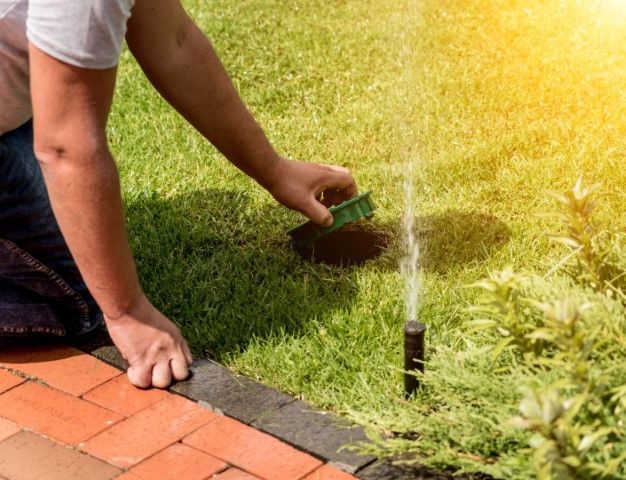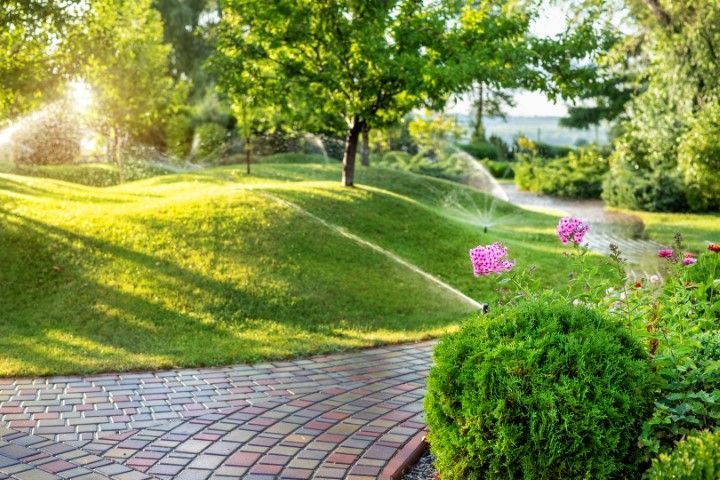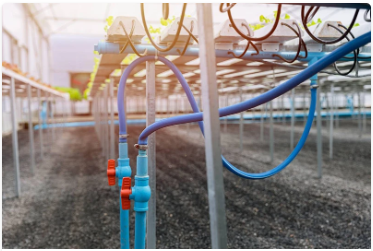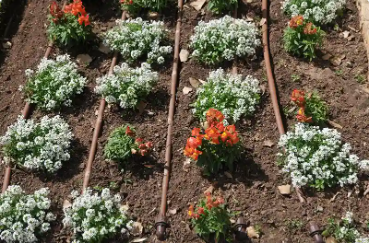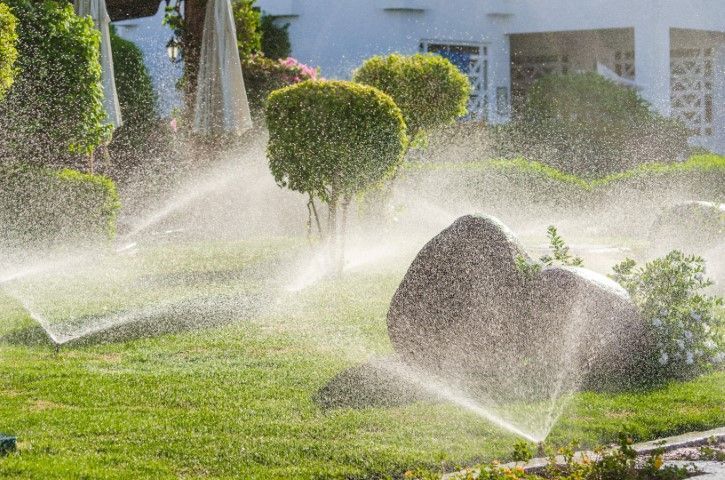How Much Does Sprinkler System Maintenance Cost? A Comprehensive Guide - SPRINKLER SYSTEMS OF SANANTONIO
How Much Does Sprinkler System Maintenance Cost? A Comprehensive Guide
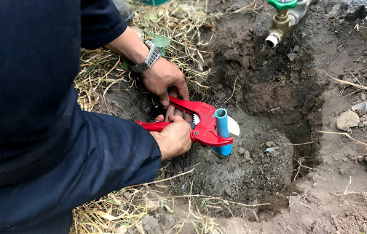
When you’re evaluating the ongoing costs of maintaining your sprinkler system, you’ll find that several factors come into play. From the complexity and scope of your system to the varying rates charged by professionals in your area, understanding these variables is crucial. You might wonder if opting for a DIY approach could significantly cut costs, or if the reliability of professional maintenance justifies its price tag. We’ll break down these costs and consider whether certain strategies, such as regular inspections and preventive maintenance, might save you money in the long term. Curious about how these factors interplay and what it means for your budget?
Understanding Sprinkler System Components
To effectively maintain your sprinkler system, it’s crucial to understand its key components: the controller, valves, sprinkler heads, and pipes. Each part plays a pivotal role in the functionality and efficiency of your irrigation setup, directly impacting water conservation and the effectiveness of your irrigation techniques.
The controller is your system’s brain, allowing you to automate watering schedules based on time and weather conditions. You’ll want to ensure it’s programmed to optimize water use, avoiding over-irrigation and thereby conserving water. The valves regulate water flow to different zones of your lawn, making it essential to keep them functioning properly to prevent leaks and ensure even water distribution.
Sprinkler heads are designed to deliver water in specific patterns and rates, making their choice and placement critical for achieving efficient irrigation. Opt for heads that suit the specific needs of your lawn areas to avoid wasteful overspray. Lastly, the pipes, often overlooked, must remain intact and clear of obstructions to maintain steady water pressure and prevent system failures.
Understanding these components helps you manage your system more effectively, ensuring durability, efficiency, and significant water conservation. Regular checks and adjustments to these elements can lead to substantial savings and a healthier lawn.
Common Maintenance Tasks
Now that you understand the main components of your sprinkler system, let’s explore the regular maintenance tasks required to keep it functioning optimally. One essential task is adjusting the watering frequency. Seasonal changes and varying plant needs dictate how often your system should run. Regular monitoring and tweaking of these intervals ensure your garden receives adequate water without waste.
Another critical maintenance action is nozzle cleaning. Over time, nozzles can get clogged with dirt and debris, affecting the spray pattern and efficiency of your sprinkler system. Regular checking and cleaning of these nozzles help maintain an even and effective water distribution, ensuring your lawn and plants thrive properly.
Weather adjustments are also vital. Changes in the weather, such as unexpected rain, drought, or freezing conditions, require corresponding adjustments in your sprinkler settings to adapt to current conditions. This not only conserves water but also prevents overwatering or under-watering.
Factors Influencing Maintenance Costs
The cost of maintaining your sprinkler system can vary significantly based on a few key factors. Firstly, the size and complexity of your system play a crucial role; larger or more intricate systems naturally require more time and resources to upkeep. Additionally, local labor rates will impact the overall cost, as the price for skilled labor can differ widely from one region to another.
System Size and Complexity
System size and complexity directly drive up your maintenance costs, as larger and more intricate setups require more time and specialized skills to manage effectively. When you’re budgeting for maintenance, consider the scope of your system. A sprawling network across a large property with multiple zones not only intensifies the labor involved but might also necessitate sophisticated diagnostic tools and periodic system upgrades.
To keep a rein on expenses, adopt proactive cost-saving tips such as scheduling regular inspections to catch issues before they escalate. Smaller, consistent investments in maintenance can prevent the hefty costs associated with major repairs or complete overhauls. Furthermore, if you’re contemplating system upgrades or expansions, factor in these future costs. Upgrades can modernize your system, potentially reducing maintenance needs through improved efficiency and durability. However, expansion costs should be evaluated against the anticipated increase in maintenance expenses.
Implementing advanced monitoring technologies can offer real-time insights into system performance, allowing for immediate interventions that can curb unnecessary spending. By understanding and managing the complexities of your system, you’ll ensure it operates optimally while keeping maintenance costs in check.
Local Labor Rates
Have you considered how local labor rates impact your sprinkler system’s maintenance costs? It’s crucial to understand that labor expenses can vary significantly depending on where you live. In urban areas, where the cost of living is typically higher, you can expect to pay more for professional services. Conversely, in rural regions, rates might be lower, but finding available and experienced technicians can be a challenge.
The disparity in labor costs can be substantial. For example, hourly rates for sprinkler maintenance professionals can range from $50 in less expensive areas to over $100 in metropolitan regions. This difference can add up, especially if your system requires extensive work or regular maintenance.
To manage these costs effectively, consider learning some basic maintenance skills yourself. DIY savings can be considerable. Simple tasks like cleaning and adjusting heads, checking for leaks, or seasonal adjustments can be easily handled without professional help. This not only cuts down on labor expenses but also gives you a better understanding of your system, which can prevent major issues in the future.
Annual Maintenance Costs Breakdown
Understanding the breakdown of annual maintenance costs for your sprinkler system is key to effective budgeting. You’ll need to account for routine inspection expenses, which ensure your system functions optimally year-round. Additionally, set aside funds for potential repairs and replacements, which vary depending on the age and condition of your system.
Routine Inspection Expenses
To ensure your sprinkler system operates efficiently year-round, it’s crucial to budget for routine inspection expenses as part of your annual maintenance costs. Understanding the inspection frequency and associated costs can help you allocate resources wisely and prevent larger expenses down the road.
Typically, your system should undergo a thorough inspection at least once annually. During these checks, a professional will assess all components, including valves, pipes, and sprinkler heads, to ensure they’re functioning correctly and efficiently. The cost for this annual service may vary depending on your system’s size and complexity but generally ranges from $75 to $200.
Besides the yearly checks, consider quarterly or bi-annual inspections if your property has extensive landscaping or if the system covers a large area. These additional services increase vigilance against potential failures, ensuring minor issues are caught and addressed early.
The fees for these maintenance services should be viewed as investments rather than just expenses. Regular maintenance not only extends the lifespan of your sprinkler system but also enhances its performance, ensuring optimal irrigation and water efficiency. By investing in routine inspections, you’re saving on potentially higher costs from emergency repairs and inefficient water use.
Repair and Replacement Costs
While routine inspections are crucial, you’ll also need to consider the potential costs for repairs and replacements that might arise throughout the year. Understanding these expenses will help you manage your budget effectively and avoid unexpected financial strain.
Firstly, familiarize yourself with common maintenance techniques. Knowing how to troubleshoot your sprinkler system can save you a fortune. For instance, you can often fix clogged nozzles or broken sprinkler heads on your own. These repairs might cost anywhere from $50 to $150 when handled professionally, but doing it yourself only requires purchasing the parts.
However, more severe issues like valve failure or pipe leaks demand professional attention. Depending on the severity, these repairs can range from $200 to over $500. To mitigate these costs, embrace preventive maintenance. Regular system checks can identify minor issues before they escalate into major problems.
Lastly, integrate cost-saving strategies into your maintenance plan. Establish a reserve fund specifically for your irrigation system. By setting aside a small amount monthly, you’ll cushion yourself against the financial impact of major repairs. Additionally, consider investing in a water-efficient system that could reduce your long-term maintenance and utility costs. Being proactive not only preserves the functionality of your system but also aligns with prudent financial management.
DIY Versus Professional Maintenance
Deciding between DIY and professional maintenance for your sprinkler system hinges on both your expertise and the complexity of the tasks involved. DIY maintenance offers several benefits, primarily cost savings. If you’re handy and have basic knowledge about sprinkler systems, you can handle routine tasks like cleaning nozzles or adjusting spray patterns yourself. However, the pros and cons are significant. While you save money upfront, incorrect handling can lead to bigger issues, potentially increasing long-term costs.
Professional services, on the other hand, provide peace of mind with expert care. Technicians can diagnose and fix complex issues that might be beyond your skill level. The cost comparison between DIY and hiring a professional depends largely on the nature of the maintenance required. Simple tasks might not justify the expense of professional services, but for more complex issues, the professional route is often more cost-effective in the long run.
You also need to consider the time commitment. DIY maintenance requires not just the time spent on actual tasks but also the time to learn and prepare. If you’re already stretched thin, professional services can be a worthwhile investment, ensuring your system’s longevity and efficacy without sacrificing your time.
Tips for Reducing Maintenance Costs
Understanding how to reduce maintenance costs can enhance your sprinkler system’s efficiency and save you money over time. First, implement preventative measures by scheduling regular inspections to catch issues before they turn into costly repairs. Early detection of leaks or blockages can prevent more severe damage, effectively minimizing expenses. Regularly cleaning the sprinkler heads and adjusting them to avoid overspray also counts as a preventive step that cuts water waste and, consequently, your bill.
Next, let’s delve into cost-saving strategies that you can manage yourself. Embrace DIY techniques for simple maintenance tasks. For instance, winterizing your sprinkler system or replacing worn-out parts like gaskets and seals can be done with basic tools and a bit of know-how. You’ll find numerous tutorials online that can guide you through these procedures.
Don’t overlook the importance of troubleshooting tips. Learn the basics of diagnosing common issues such as uneven watering or low pressure. Often, the fix might be as simple as cleaning a clogged filter or adjusting the timer settings. By handling these minor fixes yourself, you avoid the fees of calling in a professional every time something goes wrong. Armed with these strategies, you’re set to keep your system running smoothly while keeping costs down.
- Avoid These 5 Common Irrigation Blunders Every Homeowner Makes
- Your Go-To Guide for Picking the Perfect Sprinkler System for a Lush Lawn: Handy Tips and Tricks
- Impact of Climate on Irrigation System Design and Operation
- The Role of Soil Moisture Sensors in Irrigation Efficiency
- Cost-Effective Irrigation Solutions for Small Gardens
